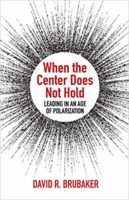I’ve consulted with about 100 congregations and other organizations in the last 27 years, and in the last five years I’ve noted a distinct trend. Congregational and other organizational leaders used to contact me with a vague request for mediation or consulting services because “we have a conflict and we need help to resolve it.” In recent years, however, leaders have been much more likely to specifically request strategic planning or structure review processes—and often both together. I’ve experienced this shift as an encouraging move towards proactive rather than reactive intervention processes in congregations and other organizations.
I also attribute this shift to growing awareness among congregational leaders of the importance of aligning structure with strategy. Congregational leaders today are by and large keenly aware of the importance of developing a shared vision and values to enable diverse congregational members to work together for a common purpose. And most leaders also know that the decision-making structures that might have served the congregation well for years need to be periodically reviewed and often revised. In the turbulent environment within which all organizations now must operate, more organic and flexible structures are becoming an urgent priority.
But while I am increasingly asked to lead “strategic planning” and “structure review” processes, I have only once been asked to conduct a “culture review” for a client. Strategy is about vision and structure is about authority, so both are critically important. But culture is about meaning—and meaning will trump both vision and authority over time. As Peter Drucker once remarked, “Culture eats strategy for breakfast.”
So why don’t congregations and other organizations undertake culture audits? For one thing, it’s very hard to do. Most of culture is at the level of assumptions, beliefs, values and norms—and thus is tacit and invisible or at least informal. Thus, we may hesitate to initiate a study of our culture as we honestly don’t know how to do so. But I’ve also come to believe that congregational leaders intuitively know that a congregation’s culture is stronger than even its top leaders. When a new leader eager to “make big changes” encounters an entrenched organizational culture the culture almost always wins. This is why many lead pastors, school superintendents, and even U.S. presidents don’t last more than three or four years in their roles. So how do we change an entrenched congregational culture, at least when that culture is preventing the congregation from fully achieving its mission and vision?
In our Little Book of Healthy Organizations, Ruth Zimmerman and I offer five suggestions for successful cultural change. They are as follows:
- Learn the culture.
- Name the strengths and weaknesses of the culture.
- Build a coalition of organizational members committed to cultural change.
- Work at cultural change incrementally rather than instantaneously.
- Model the change you wish to see (especially important for leaders).
A congregation’s culture (often comprised of numerous subcultures as well) determines the congregation’s behavior more than the congregation’s strategy or structure. Yet it is the one element of congregational life that we are least likely to study, name, or work deliberately to change.
Here are several things that the average American Protestant congregation is likely to find if it would conduct a thorough culture audit. (I’m hesitant to apply these observations to Roman Catholic, Orthodox, or Jewish congregations—simply because I’ve not consulted with those traditions.)
- The music, rituals and artifacts in the congregation are likely to reflect a particular ethnic culture—usually the founding culture of the congregation. (For example, Scottish Presbyterian, German Lutheran, English Episcopal, or Russian Mennonite.)
- The values and norms that underlie the visible rituals and artifacts are known to (and treasured by) long-term members, but are generally opaque to newer members.
- At an ever deeper level, the basic assumptions about “how we do things around here” will be completely mysterious to newcomers—even while they are taken for granted by established members.
What newcomers to our congregations often need are “cultural guides” that will help them to understand and navigate within a new culture. But what our congregations need are genuine cultural audits, undertaken by a diverse team of members, to identify what of the culture remains functional for the congregation and what needs to be renegotiated.
Let’s celebrate what’s right about our congregational cultures, but let’s not hesitate to also name the weaknesses and pitfalls of our cultures and work cooperatively to change them. Our strategic plans and restructuring efforts are often necessary and useful, but they will be trumped every time by that most persistent of congregational forces—its culture.
This column is adapted from a blog posted on the Center for Justice and Peacebuilding (CJP) website of Eastern Mennonite University, June 2011.
David Brubaker has consulted with organizations and congregations in the U.S. and a dozen other countries on organizational development and conflict transformation. He is the author of Promise and Peril, on managing change and conflict in congregations, and When the Center Does Not Hold, on leading in an age of polarization. David recently retired from his role as Dean of the School of Social Sciences and Professions at Eastern Mennonite University, and is now a Professor Emeritus of Organizational Studies.


